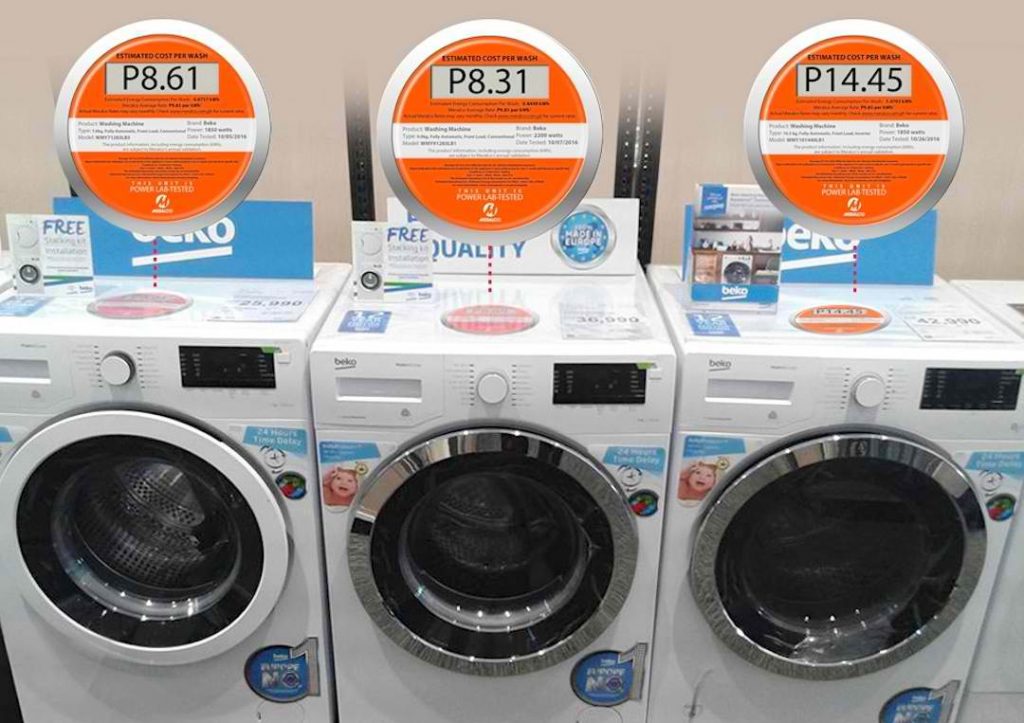As we all know, all appliances can account from 30% or more of our home energy usage. As our dependence on each appliance increase, the energy requirement also increases. At this point, it is important to know how to choose energy efficient appliances because it uses less electricity and can still achieve the same level of performance to similar models with the same size or capacity.
The Department of Energy (DOE) is planning to impose integrating “star rating” on ordinary household electrical appliances in the coming months as a guide for the consumers to know their energy consumption. The star rating of an appliance is determined from the energy consumption and size of the product.
Read: How to cut down electricity monthly bill
The directive will be addressed to the manufacturers of the electrical appliances. The labels on the following devices can show a maximum of ten (10) stars:
- Televisions
- Computer monitors
- Refrigerators
- Air conditioners
- Washing machines
- Dryers; and
- Dishwashers
Meaning, products with ten stars are the most efficient. The ones with one star however, are the less efficient = more consumption.
The rating will be based on the number of stars indicated. More stars mean higher energy efficiency. Therefore, the consuming public has to look for the appliances that can help them save more on energy and would provide a large cut on their electrical bills. There are models with 6 stars or less and it will be displayed on the label out of six stars and shown in half-star increments. The super efficient models of 7 of 10 stars have no increment and are shown in single star increments.
The DOE also confirmed that appliances with inverter technology like: refrigerators, washing machines, and air conditioning units can indeed lower a household’s electrical energy consumption. Inverter technology (DC) is considered the latest evolution of technology. This is concerning the speed of the electro motors of the compressors to continuously regulate the temperature.
It was recently introduced in the market to provide significant cuts on the electric bill although inverter technology units are more expensive compared to the conventional units. The term inverter in electronics usually means converting DC in AC at a desired frequency and voltage.
On the other hand, DOE reminded the consumers to still examine the deal offered by appliances with inverter technology. This is because they are not all the similar. So in conclusion, the consumer must know the Energy Efficiency Rating (EER) or Energy Efficiency Factor (EEF) of the appliances to be purchased.
Engr. Isagani Soriano of DOE explained that the higher EER, the higher energy savings are due to low operating cost. You can always find the EEF written in black on a yellow sticker.
So, when buying a particular appliance, you should always consider checking these yellow tags out. You can compare their ratings and prices before spending your hard-earned money. Some with higher EER also cost higher but of course, their benefits will be long-term. In addition, these types of appliances can aid you in saving for they can dramatically reduce your electricity costs.
For example, in this particular brand of a refrigerator, it has a rating of 355, significantly higher than most refrigerators in the market.
Electricity giant Meralco also has been placing orange tags to provide ideas for the consumers about the energy consumption cost of electrical appliances.

Whether you want to follow the yellow, the orange tag or the upcoming star ratings, one thing is for sure, you are going to save more than you used to. It’s not also actually having the right product; its how you use your appliances in your home can make the big difference.
One way of saving is to avoid leaving appliances on standby mode. There is still energy used by certain appliance when not in used and not switched off at the plug. Another is to dispose old appliances because the nature of their materials can really give you a high energy cost.
Money is not easy to earn. This paves the road of reason why we should wisely spend it. Appliances that are energy efficient are not that very difficult to come across. One thing we always need to remember is that even if these appliances cost more, in the long-run, we would be saving more money that what we have ever spent for items like this.
Read Also: How to pay Meralco bills online
Featured Image: Meralco Ad